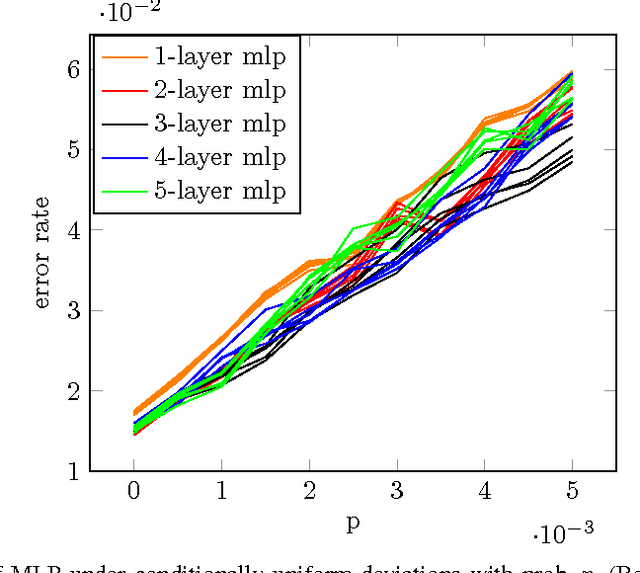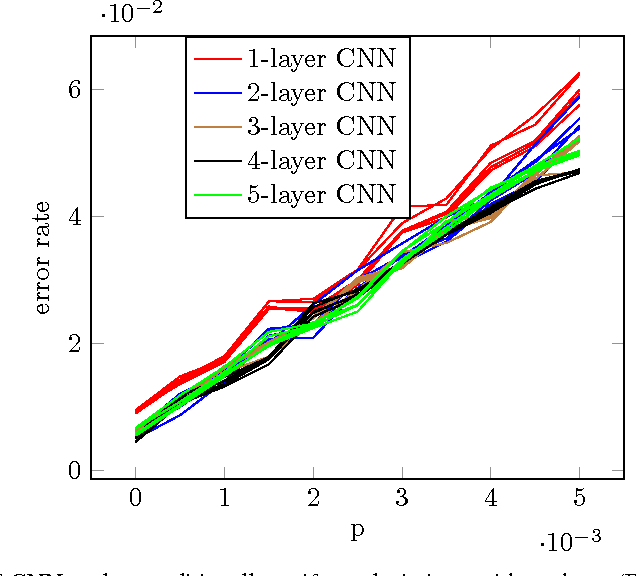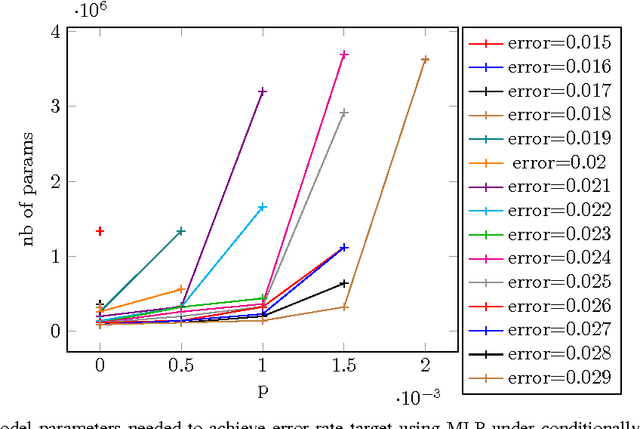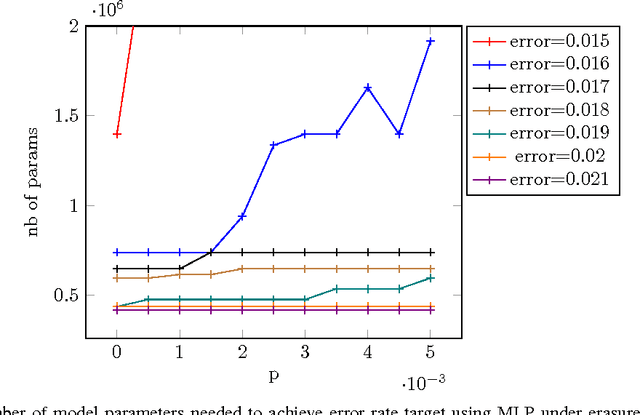A Study of Deep Learning Robustness Against Computation Failures
Paper and Code
Apr 18, 2017



For many types of integrated circuits, accepting larger failure rates in computations can be used to improve energy efficiency. We study the performance of faulty implementations of certain deep neural networks based on pessimistic and optimistic models of the effect of hardware faults. After identifying the impact of hyperparameters such as the number of layers on robustness, we study the ability of the network to compensate for computational failures through an increase of the network size. We show that some networks can achieve equivalent performance under faulty implementations, and quantify the required increase in computational complexity.
 Add to Chrome
Add to Chrome Add to Firefox
Add to Firefox Add to Edge
Add to Edge